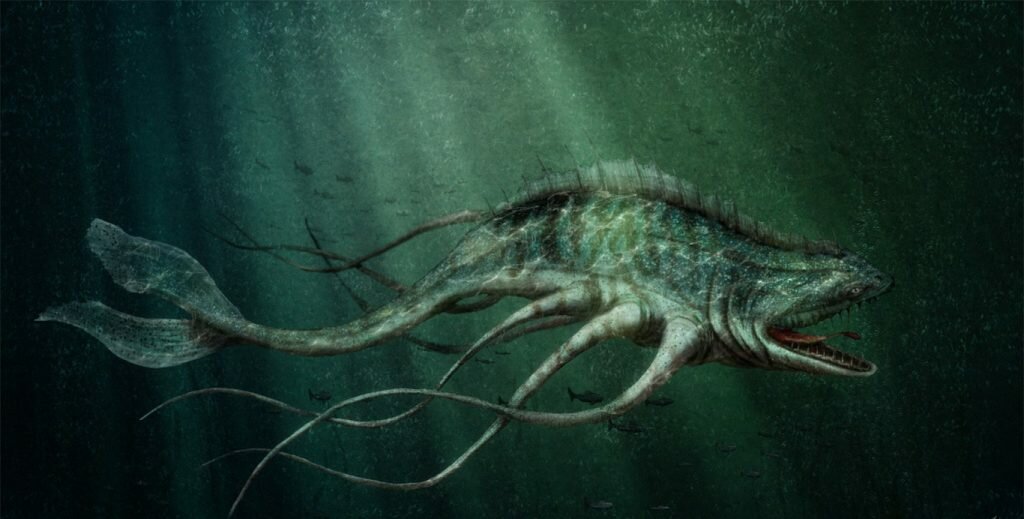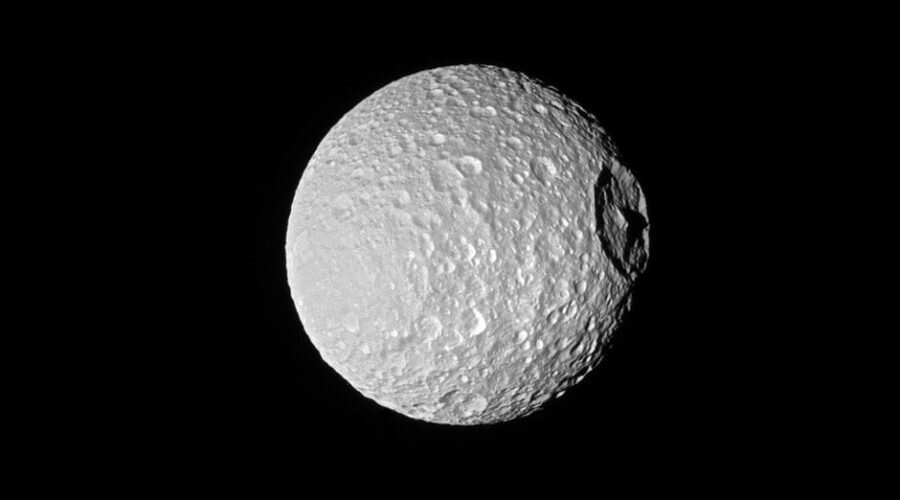Mimas – the tiny, innermost moon of Saturn that bears resemblance to the Death Star from Star Wars – may have an internal sub-surface ocean, a new study has suggested.
The new research, published in the journal Icarus on Wednesday, assessed data from Nasa’s now-defunct Cassini spacecraft, and found that Mimas may have a “stealth” ocean of liquid water deep under its icy surface.
In its waning days, Cassini identified some oscillations in the moon’s rotation, which researchers from the Southwest Research Institute (SwRI) in the US say indicates evidence of a geologically active body capable of supporting an internal ocean.
Over the last two decades, thanks to measurements by several spacecraft sent to study planets and their moons, scientists have found that worlds with oceans beneath layers of rock and ice are common in our solar system.
These include the icy moons of giant planets like Jupiter and Saturn, such as Europa, Titan, and Enceladus.
While planets like the Earth with surface oceans must reside within a narrow range of distances from their stars to maintain the temperatures needed for supporting liquid oceans, the discovery of these interior water ocean worlds has greatly expanded the number of potentially habitable regions in the galaxy.
“Because the surface of Mimas is heavily cratered, we thought it was just a frozen block of ice,” said Dr. Alyssa Rhoden, a researcher with the Southwest Research Institute.
“Interior water ocean worlds, such as Enceladus and Europa, tend to be fractured and show other signs of geologic activity.”
“Turns out, Mimas’ surface was tricking us, and our new understanding has greatly expanded the definition of a potentially habitable world in our Solar System and beyond.”
Underground oceans on distant moons could mean alien life in our solar system
Mimas’s oscillation could indicate that Saturn’s gravity stretches and relaxes the planet as it spins — similar to the moon’s gravity pulling Earth’s water back and forth during tides. This process could build up energy deep inside Mimas, which is released as heat, warming its internal ice and creating an underground ocean of liquid water.
Rhoden and Walker developed computer models to simulate that stretching process for Mimas, including how it would affect the stability of the moon’s ice shell, and how that stretching fits in with Cassini’s measurements of Mimas’s oscillation. The model indicated that Saturn’s tidal pull could maintain an ocean lying beneath 14 to 20 miles of ice on Mimas.
“This result is really intriguing because it implies that we can’t tell which moons in the outer solar system may have subsurface oceans just from their surface geology,” Bland said.
Some moons — like Jupiter’s Europa and Saturn’s Enceladus — have plumes of water shooting up from their internal oceans, through their surface ice, and into space. In 2020, scientists also discovered evidence of an underground ocean on a dwarf planet called Ceres, which orbits the sun between Mars and Jupiter. Salt deposits on Ceres’s surface appear to have percolated up from liquid water below.
These ocean worlds could have deep-sea hydrothermal vents that produce energy for living organisms. Such vents serve as an energy source for life at the bottom Earth’s oceans, where there is no sunlight. If Mimas has an ocean, it might be able to host such ecosystems, too.

For instance, NASA’s Juno spacecraft is scheduled to fly by Europa and use its microwave radiometer to measure heat flows in this Jovian moon.
These data will allow planetary researchers to understand how heat flow affects the icy shells of ocean worlds such as Mimas, which are particularly interesting as NASA’s Europa Clipper approaches its 2024 launch.
“Although our results support a present-day ocean within Mimas, it is challenging to reconcile the moon’s orbital and geologic characteristics with our current understanding of its thermal-orbital evolution,” Dr. Rhoden said.
“Evaluating Mimas’ status as an ocean moon would benchmark models of its formation and evolution.”
“This would help us better understand Saturn’s rings and mid-sized moons as well as the prevalence of potentially habitable ocean moons, particularly at Uranus.”
“Mimas is a compelling target for continued investigation.”
Sources
https://www.sciencedirect.com/science/article/abs/pii/S1

